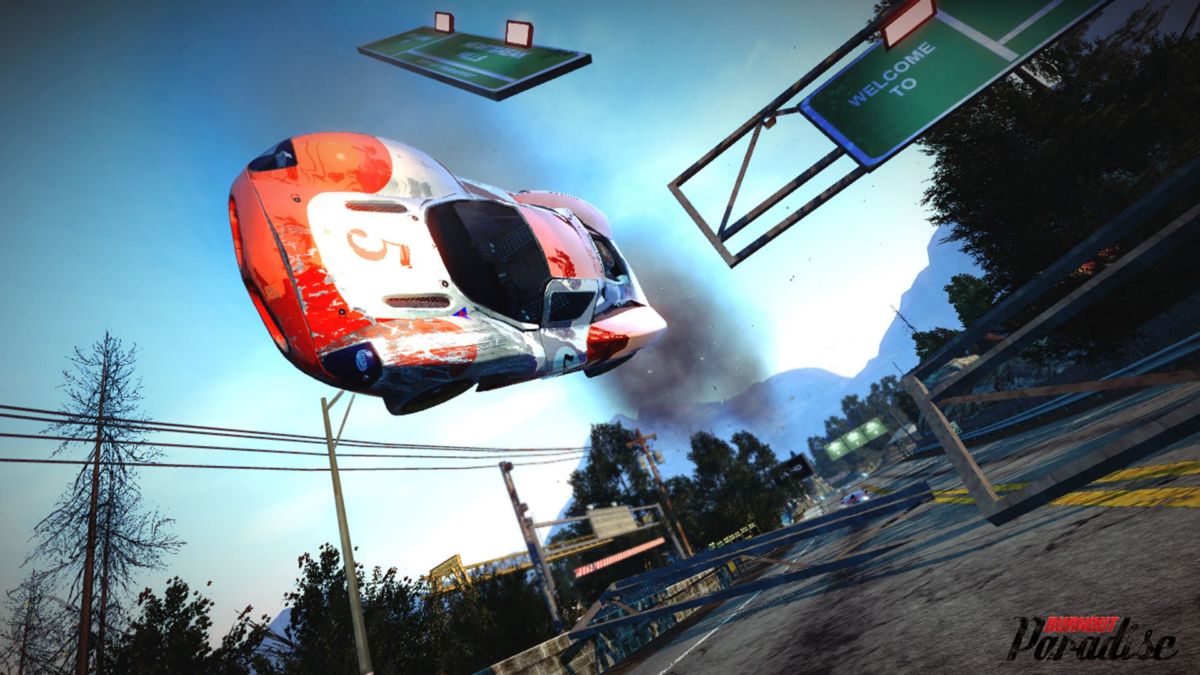Imagine publishing one of the best racing games ever made, then never making another one because you’d rather focus on a series of mid-tier Need For Speed games. Oh wait, you don’t need to imagine that because that’s what happened with the Burnout series. EA published Burnout Paradise in 2008, arguably the best entry in the entire series aside from Burnout 3: Takedown, then quietly killed the series off in favour of Need For Speed.
It’s a shame, because as far as open world racing games go, few have ever managed to come close to the brilliance that is Burnout Paradise. Forza Horizon makes a pretty good go of it, but Paradise City’s metropolitan playground is undeniably the king of open world racing games. There’s never been a racing game like it before or since, and quite frankly, it’s a huge shame that Criterion never had a chance to properly refine the formula in a sequel or follow-up Burnout game.
Burnout Paradise’s secret is the same one that makes Yakuza so compelling: their open world sandboxes are actually sized like a regular sandbox, meaning you’re not trudging through empty fields and endless filler to actually reach your destination. On top of that, every inch of Paradise City has an event to compete in, a secret area to perform some stunts in, or some kind of shortcut to give you the edge in your races.

If anything, Burnout Paradise is the racing game that was most committed to the idea of freedom than any other. Not only was the world completely open, but you were always given free reign in how you wanted to interact or progress with the world. Players could complete any event they wanted to progress, whether that was races, Road Rage, Marked Man, time trials or stunt events, and once players completed enough to earn their next licence, the map would be reset and you could complete those events again. Instead of forcing players to complete events they don’t want to do in the early going, you could find safety in the events you do like, which is always nice.
Even the races themselves offered more freedom than other racing games at the time, focusing on point to point with no checkpoints instead of proper circuits. Some may lament the lack of guidance, either in the form of regular laps or just checkpoints telling you where to go, but that freedom gave room to lightning fast decision-making and improvisation, as you barrel down alleyways and across rooftops in an attempt to reach first place.
Outside of Burnout Paradise’s 15 year history, Criterion’s open world masterpiece is always going to have a special place in my heart. My first post for Cultured Vultures, back in February 2017, was about being able to revisit Paradise thanks to Xbox’s backwards compatibility, before EA decided to remaster the game for modern platforms anyway. Back then, I was gushing about how much the game still held up, and that’s still true to this day. The only thing that could compete with Burnout Paradise would be a remaster of Burnout 3, but the chance of that happening is practically non-existent.
Come on, prove me wrong, EA.
READ MORE: 10 Best Racing Games For Kids of All Ages
Some of the coverage you find on Cultured Vultures contains affiliate links, which provide us with small commissions based on purchases made from visiting our site. We cover gaming news, movie reviews, wrestling and much more.



